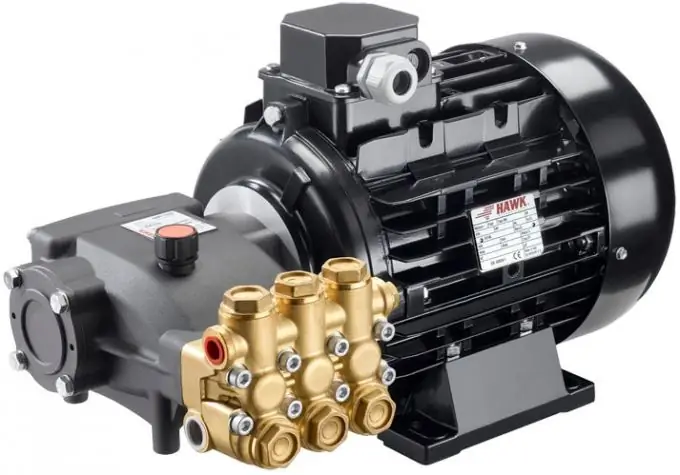- Author Nora Macey [email protected].
- Public 2023-12-16 10:17.
- Last modified 2025-01-23 08:47.
Over time, there were tendencies to replace obsolete piston pumps with more modern designs. Most often these are plunger pumps, their use allows you to mix various components of solutions in a certain ratio, which is necessary during production and in everyday life.

Functional features of the plunger pump
Plunger pumps belong to the category of metering type hydraulic devices. This design allows you to dose and mix the various constituent components of the solutions in the required ratio. In accordance with design features, this category of pumps is divided into two groups: volumetric and non-volumetric.
Positive displacement plunger pumps in terms of their functionality and principles of operation resemble piston pumps. The main difference lies in the design of a special piston - a plunger. This unit is presented in the form of a metal rod with a reciprocating motion. In this case, no contact with the walls of the working chamber of the pump occurs. As the main working element of the pump, the plunger must meet certain requirements, namely, to be strong, leak-proof and resistant to wear.
The specificity of the plunger pump operation is the direction of movement of the plunger. When the unit moves to the right, there is a decrease in pressure inside the working compartment while maintaining consistently high values in the suction pipe. With such a pressure drop, the suction valve is activated, through which the solution passes into the working chamber. When the unit moves to the left, the reverse process takes place, and the solution is displaced from the working chamber.
When the pressure levels in the plunger pump change, pulsation can occur. This can negatively affect the performance of the device, therefore it is recommended to eliminate this problem. You can resort to using several plungers connected by a shaft and moving in a cyclic mode. Differential operation of the device is also possible when liquid is pumped in any direction.
Types of plunger pumps
Water plunger pumps function on the same principle as most other pumps. The pumped volumes are entirely dependent on the internal pressure - the higher its level, the more capabilities the device has.
Depending on the design features, different types of pumps are distinguished:
- vertical and horizontal;
- single and multi-plunger;
- with control in manual or automatic mode;
- with and without heating jacket;
- single and multi-cylinder;
- with cylinder sealing.
The high-pressure pump category handles fluids of various properties, so they are made from those materials that are suitable for a given environment.






